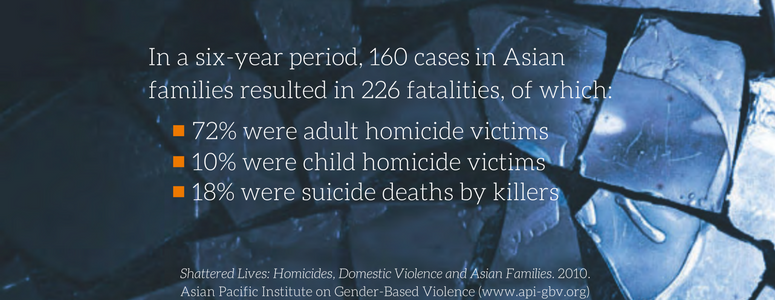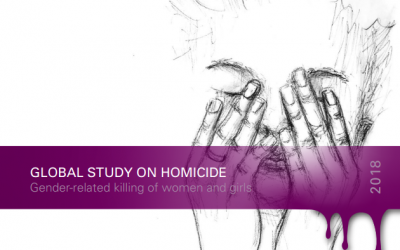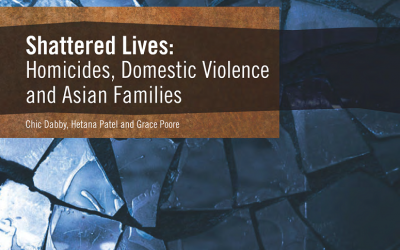Homicide and Domestic Violence
%
of the 87,000 women intentionally killed in 2017 were murdered by an intimate partner or other family member
Who gets killed?
The answer to this question is crucial to understanding the struggles of battered women to survive their abusive relationships and to protect the safety of their children, family and friends.
Globally, more than 35% of all murders of women are reported to be committed by an intimate partner.
WHO: Femicide Report (2012)
In the U.S., 55% of all homicides are IPV-related.
CDC: Homicides of Women & IPV (2017)
Who did the killing?
This question reminds us who is responsible for these deaths; bringing into sharp focus the relationships that batterers hijack for the final time when they transition from abusers to killers.
Contrary to media and public opinion, domestic violence related homicides are not “crimes of passion” where killers suddenly “snapped,” but are by and large, carefully executed plans that involve deliberation, planning, and extensive monitoring/stalking of victims.
Homicides in API families
A national study by the CDC analyzed 236 homicides of API women, finding that:
- 58% of cases with known causes were IPV related.
- Of the IPV related homicides, 81% of perpetrators were the victim’s current intimate partner, and 10% were a former intimate partner.
CDC: Homicides of Women & IPV (2017)
160 Asian homicide cases involving domestic violence, from a six-year period, resulted in 226 fatalities, of which 184 were homicide victims and 42 were perpetrator suicides. In these cases:
- 83% of perpetrators were men, 14% were women, and 3% were unknown.
- 78% of victims were women and girls, 20% were men and boys, and 2% were unknown.
- Intimate partners — male or female current, estranged, or ex-partners — were the largest group of victims (68%).
- Children were the second largest group of victims (12%).
- Perpetrators’ in-laws and parents of his girlfriend were the third largest group of victims (9%).
- 60 of the 63 non-fatal child victims whose information was known were on the premises during the killing of their mothers or other family members.
Shattered Lives: Homicides, Domestic Violence, and Asian Families (2010)
Our Work: Understanding Family & Community Generated Risk Factors
For Asian immigrant and refugee women, community or family-generated risks include violent and credible threats by male and female in-laws, blocking victims from seeking help by threatening them with deportation and/or loss of home and children, adding to the batterer’s victim-blaming tactics, arranging a contract killing (in her home country), and prohibiting and ostracizing abused women from leaving or seeking divorce. In some communities, e.g., this can include making it known that separated/divorced women will not be buried by the batterer’s family even if he kills her – given the importance of burial rituals, such practices put women at elevated risk for staying in abusive situations despite escalating danger.
Resources on Domestic Violence Related Homicide
Global Study on Homicide: Gender-related killing of women and girls, 2018
By United Nations Office on Drugs and Crime
Around 87,000 women were killed around the world in 2017, including 50,000 (58%) at the hands of intimate partners or family members. This amounts to some six women being killed every hour by people they know. This study examines available homicide data to analyze the gender-related killing of women and girls, with a specific focus on intimate partner and family-related homicide and how this relates to the status and roles of women in society and the domestic sphere.
Shattered Lives: Homicides, Domestic Violence and Asian Families, 2010
An analysis of domestic violence related homicides in Asian families from 2000 to 2005.
Gender Differences in Intimate partner Homicides among Ethnic Subgroups of Asians, 2016
Sabri B, Campbell JC, & Dabby C. 2016. Violence Against Women. 22(4): 432-453.
This study analyzed gender differences in intimate partner homicides (IPHs) among Asian Americans.
Results from the Hawai’i Domestic Violence Fatality Review, 2000-2009
Pobutsky A, Brown M, Nakao L, & Reyes-Salvail F. 2014. Journal of Injury & Violence 6(2): 79-90.
The results of multidisciplinary and multiagency reviews of domestic violence fatalities conducted by the Hawai’i Domestic Violence Fatality Review.
Other Resources
Centers for Disease Control: Racial and Ethnic Differences in Homicides of Adult Women and the Role of Intimate Partner Violence, United States, 2003-2014 (2017)
Danger Assessment: a tool that helps advocates and clients determine the level of danger an abused woman has of being killed by her intimate partner.
MyPlan App: a self-evaluation tool designed to help survivors assess whether they or a friend are safe within a relationship.
National Clearinghouse for the Defense of Battered Women (NCDBW): a technical assistance resource and advocacy center for battered women charged with crimes related to their abuse with aims to increase justice for — and prevent further victimization of — arrested, convicted, or incarcerated battered women.
National Domestic Violence Fatality Review Initiative: provides technical assistance, training and resources for the reviewing of domestic violence related deaths with the underlying objectives of preventing them in the future, preserving the safety of battered women, and holding accountable both the perpetrators of domestic violence and the multiple agencies and organizations that come into contact with the parties.
VAWnet: Special Collection on Intimate Partner Homicide Prevention (2016)
Washington State Coalition Against Domestic Violence (WSCADV): Washington State Fatality Review Reports
World Health Organization: Understanding and Addressing Violence Against Women: Femicide (2012)



